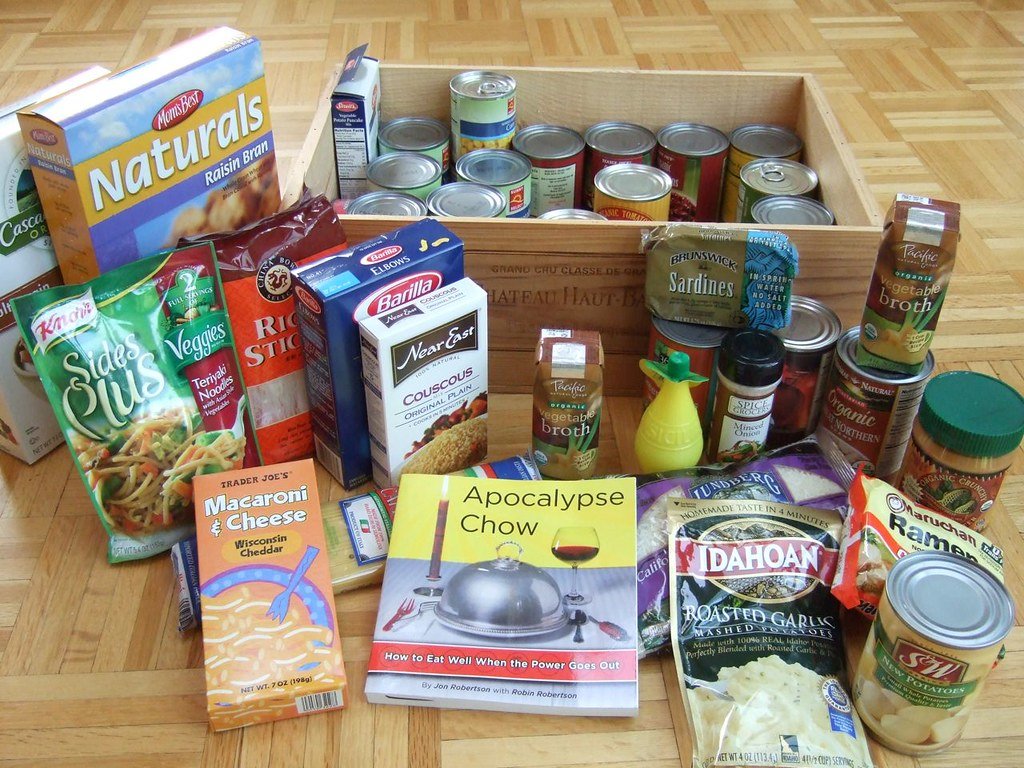Now Reading: How to Store Rice for Maximum Shelf Life
-
01
How to Store Rice for Maximum Shelf Life

How to Store Rice for Maximum Shelf Life
Rice, the humble yet versatile staple, has graced our plates for centuries, providing sustenance and satisfaction with every grain. But what happens when we buy a large bag of this essential grain, only to find it turning rancid before we can even enjoy the last morsel? Fear not, for we hold the key to unlocking the secrets of rice storage and extending its shelf life to unparalleled lengths. From ancient techniques passed down through generations to innovative methods embraced by modern pantry enthusiasts, this article delves into the captivating realm of rice preservation, ensuring that your precious grains remain fresh and aromatic for as long as possible. So, put on your rice connoisseur hat, and let the journey to maximum shelf life commence!
Table of Contents
- Choosing the Right Storage Container for Rice
- Best Practices for Handling and Cleaning Rice
- The Importance of Proper Temperature and Humidity Control
- Effective Methods for Prolonging Rice Shelf Life
- Tips for Checking and Maintaining Rice Quality
- Q&A
- Future Outlook

Choosing the Right Storage Container for Rice
When it comes to storing rice, selecting the right container is crucial to keep it fresh and prevent any unwanted pests from invading your precious grains. Here are a few important factors to consider:
- Airtight Seal: Opt for a storage container that provides an airtight seal to keep moisture, air, and pests out. This ensures that your rice remains dry and free from any contaminants.
- Material: The material of the container also plays a significant role. Go for food-grade plastic or glass containers, as they are non-toxic and do not affect the taste or quality of the rice. Avoid using metal containers, which can rust over time.
- Size: Consider the amount of rice you typically store and choose a container that can accommodate it without leaving too much empty space. This helps to prevent the rice from absorbing moisture from the air, which can lead to spoilage.
By carefully selecting a storage container that meets these criteria, you can prolong the shelf life of your rice and maintain its freshness for extended periods. Remember, investing a little extra effort in choosing the right container today will save you from any rice-related woes in the future!

Best Practices for Handling and Cleaning Rice
When it comes to handling and cleaning rice, there are a few tried and true practices that can elevate your culinary experience. From selecting the right type of rice to properly rinsing and storing it, these simple steps can make a world of difference in both taste and texture.
- Choose the right type: Each type of rice has its own unique flavor and texture. Whether you’re cooking sushi, jasmine, basmati, or wild rice, it’s essential to pick the right variety for your dish. Take into consideration the dish’s requirements and consult recipes to ensure you choose the perfect rice variety.
- Thoroughly rinse before cooking: Rinsing rice removes excess starch, resulting in fluffier cooked grains. Place the desired amount of rice in a fine-mesh sieve and rinse under cold water until the water runs clear. For an extra touch, gently rub the grains between your fingers to remove any remaining debris.
- Store rice properly: To maintain its freshness and prevent the growth of bacteria, always store rice in an airtight container in a cool, dry place. Avoid storing it in the refrigerator as this can alter its texture. Also, it’s best to use rice within six months to ensure optimum taste and quality.
By following these , you can ensure that every meal with this versatile grain is a memorable one. So, go ahead and unleash your culinary creativity!
The Importance of Proper Temperature and Humidity Control
Ensuring the right temperature and humidity in any environment is crucial for maintaining optimal conditions for people, equipment, and materials. Whether it’s a home, office, warehouse, or laboratory, proper temperature and humidity control play a vital role in creating a comfortable and safe space.
Benefits of Proper Temperature Control:
- Enhanced comfort: Correct temperature control helps create a pleasant atmosphere, promoting productivity and well-being.
- Improved energy efficiency: By maintaining the right temperature, energy consumption can be reduced, resulting in cost savings.
- Preservation of belongings: Sensitive items like electronics, artwork, and documents can be preserved for longer periods by controlling temperature fluctuations.
Importance of Humidity Control:
- Preventing mold and mildew: High humidity levels can lead to the growth of mold and mildew, which can cause structural damage and health issues.
- Protecting wood and furniture: Excessive moisture in the air can warp or degrade wooden furniture and fixtures.
- Better indoor air quality: Proper humidity control helps reduce allergens and prevent respiratory problems caused by dry or overly humid conditions.
Effective Methods for Prolonging Rice Shelf Life
Preservation Techniques for Extending the Shelf Life of Rice
Ensuring that rice stays fresh and retains its nutritional value for an extended period can be a challenge. However, with the right techniques, you can prolong the shelf life of rice and avoid unnecessary waste. Here are some effective methods to consider:
- Proper storage: Always store rice in a cool, dry place, preferably in an airtight container. Moisture is a rice’s worst enemy as it can lead to mold growth and spoilage.
- Freezing: If you anticipate not using the rice for an extended period, freezing it can significantly extend its shelf life. Divide the rice into portion sizes, place them in airtight freezer bags, and freeze. Thaw the rice before use by microwaving or letting it sit at room temperature.
- Vacuum sealing: Vacuum-sealing rice removes all the air, preventing oxidation and extending its longevity. This method is particularly useful for storing large quantities of rice for long periods.
- Adding desiccants: Placing desiccant packets in rice containers effectively absorbs excess moisture, keeping the rice fresh and reducing the risk of spoilage. Ensure the desiccants are food-grade and non-toxic.
- Hermetic storage: Using airtight containers with a special seal or lids that lock out moisture and air can significantly increase the shelf life of rice. These containers are widely available and a worthwhile investment.
Remember, proper storage techniques are crucial in maintaining the quality, flavor, and nutritional value of rice. Implementing these effective methods ensures that your rice remains fresh and ready for consumption over an extended period.
Tips for Checking and Maintaining Rice Quality
When it comes to cooking rice, quality is key. Here are some helpful tips to ensure you always have perfectly cooked and delicious rice:
- Selecting the right rice: Start by choosing the right type of rice for your dish. Whether you prefer long grain, short grain, or basmati rice, make sure it is fresh and not past its expiration date. Moreover, opt for a reputable brand to ensure superior quality.
- Inspecting rice grains: Before cooking, take a closer look at the raw rice. The grains should be uniform in size and color. Avoid any rice that appears discolored, broken, or has an excessive amount of impurities.
- Storing rice properly: Rice can spoil easily, so it’s important to store it correctly. Transfer the rice into an airtight container and keep it in a cool, dry place away from direct sunlight. Avoid storing rice near strong-smelling foods as it easily absorbs odors.
- Checking for moisture: Moisture is the enemy of rice. If the rice has high moisture content, it can become sticky and gummy after cooking. To check for moisture, take a small amount of rice between your fingers and rub it gently. If it feels damp, it might have excess moisture.
- Inspecting for pests: Rice can attract pests like weevils and beetles. To ensure you don’t have any unwanted visitors, look for signs of infestation such as holes in the packaging or visible insects. If any pests are found, discard the rice immediately.
By following these tips, you can maintain the highest quality in your rice and enjoy consistent and tasty results every time you cook.
Q&A
1. How can I store rice for maximum shelf life?
To maximize shelf life, store rice in an airtight container in a cool, dry place away from sunlight and moisture. Ensure that the container is free from any pests and contaminants to prevent spoilage.
2. Is it essential to store rice in an airtight container?
Yes, storing rice in an airtight container keeps moisture and pests at bay, ensuring its longevity. Additionally, it prevents any unwanted odors or flavors from permeating the rice.
3. Can rice be stored in the refrigerator?
While refrigeration may help extend the shelf life of some food items, it is not recommended for rice. The moisture and temperature fluctuations in the refrigerator can negatively affect the quality and texture of the rice.
4. Does the type of rice affect its shelf life?
Yes, the type of rice can influence its shelf life. White rice typically has a longer shelf life than brown rice due to its lower oil content. However, both can be stored using the same methods to maximize their longevity.
5. Can I store rice in the freezer for long-term storage?
Yes, rice can be stored in the freezer for long-term storage. Place the rice in airtight freezer-safe bags or containers to protect it from the formation of ice crystals that can affect its texture. Thaw and use as needed.
6. Can rice spoil or go bad if stored for too long?
If stored properly, rice can have an impressively long shelf life. However, after an extended period, it may become more prone to developing an off taste or texture. It is best to check for any signs of spoilage such as strange odors or mold before consuming rice that has been stored for an extended time.
7. How long can rice be safely stored?
When stored correctly, white rice can be safely stored for up to 4-5 years, while brown rice can last around 6-8 months. However, for the best quality, it is recommended to consume rice within 2 years for white rice and 6 months for brown rice.
8. Is it necessary to wash rice before storing it?
While it is not necessary to wash rice before storing it for shelf life purposes, rinsing rice before cooking can help remove excess starch. This improves the texture and prevents the rice from clumping during cooking.
9. Can I store rice in the original packaging it came in?
The original packaging of rice is generally not designed for long-term storage. It is better to transfer the rice to an airtight container that provides better protection against pests, moisture, and external contaminants.
10. How can I tell if stored rice has gone bad?
If rice appears discolored, has an unusual odor, or develops mold, it is a clear sign that it has gone bad and should not be consumed. Additionally, a gritty texture or signs of pests can also indicate spoilage. When in doubt, it is best to discard the rice to ensure food safety.
Future Outlook
As we conclude our culinary expedition into the realm of rice preservation, we hope you have gained a rich tapestry of knowledge on how to ensure the longevity of this humble grain. Like a guardian cherishing a precious gem, proper rice storage requires finesse and attention to detail.
Remember, armed with the wisdom shared within these pages, you hold the key to unlocking a world of culinary possibilities. As you embark on your gastronomic journey, whether it be creating indulgent dishes or simple comfort food, you can approach it with confidence, knowing your rice is stored immaculately.
Let us never undermine the value of a well-stocked pantry where the steadfast presence of rice silently beckons adventurous palates. So, dear reader, pat yourself on the back for taking the time to understand the intricacies of rice preservation.
May your rice bins be sturdier than ever, preserving the whispers of distant paddy fields for years upon years. Embrace the tranquility that comes with a neatly organized pantry, where the presence of rice evokes both nostalgia and anticipation.
As society evolves, let us remain ever grateful for the sustenance bestowed by this transformative grain, symbolizing abundance and adaptability. With the knowledge we have shared, you become a true custodian of rice, joining a growing community of enthusiasts spreading the alchemy of gastronomy to every corner of the world.
So, dear culinary aficionados, take this newfound knowledge and make your rice sing with flavor, nutrition, and a story that transcends mere sustenance. Whether it graces the grandest feast or provides humble nourishment during challenging times, your stored rice will continue to be the unsung hero of your kitchen shelves.
Farewell, dear reader, as we part ways for now. Continue to embrace the magic of rice storage, cherish its endurance, and share the secrets of its preservation with those you hold dear. Remember, as you embark on your culinary adventures, that the longevity of your rice is a testament to your commitment and passion for the art of preservation. Happy cooking and may your pantry always be brimming with the promise of a bountiful future.
As an affiliate, my content may feature links to products I personally use and recommend. By taking action, like subscribing or making a purchase, you’ll be supporting my work and fueling my taco cravings at the same time. Win-win, right?
Want to read more? Check out our Affiliate Disclosure page.





